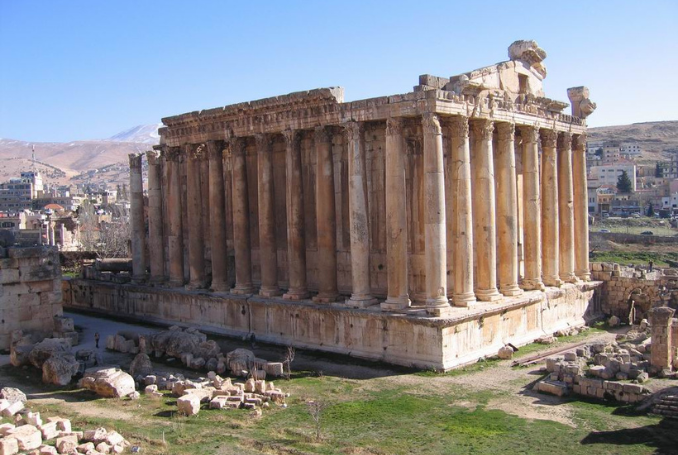
The city of Baalbek in the Bekaa Valley is known to host significant Roman ruins and is recognized as a World Heritage site.
The United Nations Spokesperson for the Secretary-General, Stephane Dujarric, asserted on Wednesday the need to protect cultural heritage sites, following Israeli strikes in the proximity of the famed Baalbek ruins.
In his press briefing, Dujarric highlighted the distressful situation that resulted from the massive evacuation order issued by the Israeli army to the residents of Baalbek, east of the country.
“This prompted mass displacement and panic among residents,” he explained, pointing out that other evacuation orders were also issued “in several localities in Nabatieh”, south of Lebanon.
In the Q&A that followed the press brief, a reporter questioned the UN spokesperson on the absence of a statement by the United Nations Educational, Scientific and Cultural Organization (UNESCO) on the need to protect a World Heritage site like Baalbek.
“You have the Roman temples there. There were pictures today of smoke rising near them. Not on them, but near them, I haven’t seen any statements from UNESCO about the preserving, protecting them,” he questioned.
Heartbreaking that endangering monuments stirs more outrage than killing people… but here we are: Israel’s bombing campaign is so systematic that it now threatens Baalbek’s 2,000-year-old Roman temples. An external wall has already been hit. This is pure madness. pic.twitter.com/1hY3S0xE9D
— Michel Helou | ميشال حلو (@michelhelou_lb) October 30, 2024
“Yes, I mean, clearly, we do not want to see any harm done to people and also to the cultural heritage,” Dujarric answered.
The UN spokesperson went on to say, that the world has witnessed the destruction of several cultural sites in recent conflicts, and this needs to stop because they “can never be replaced,” reiterating the need to protect UNESCO sites.
When asked if destroying a cultural heritage site is considered a war crime, Dujarric said that he is unable to give a definitive answer to the question.
“But I can tell you we do not want to see any harm done to that place,” he stated.
The city of Baalbek in the Bekaa Valley is known to host significant Roman ruins and is recognized as a World Heritage site. The city is also home to over 100,000 residents.
Systematic Destruction
In its over one-year genocide in Gaza, Israel has systematically targeted cultural, historical and archaeological sites all over the besieged Strip.
At the onset of the war, Israeli NGO Emek Shaveh announced that hundreds of ancient sites, historic monuments, museums, and archives had been damaged or destroyed.
Hundreds of Historical Archaeological Sites Destroyed in Gaza – Israeli NGO
“We have been monitoring the situation as best as possible from the beginning of the war,” Emek Shaveh said in a statement last January.
“The devastation is widespread,” the organization stressed.
The Gaza government media office has also repeatedly said that the Israeli army has destroyed hundreds of archeological and ancient sites in the ongoing aggression on Gaza.
War on Lebanon
Since the start of the Israeli war on Gaza, on October 7, 2023, the Lebanese movement Hezbollah has engaged directly, but relatively in a limited way in the war against the Israeli occupation.
Israel escalated its aggression with the cyber-terror attacks on September 17 and 18, which claimed the lives of at least 37 people including children, and injured around 3000 others.
This went hand in hand with a series of assassinations of Hezbollah leaders, including that of the Secretary-General of the resistance party Hassan Nasrallah on September 27.
LIVE BLOG: Gaza Hospitals under Attack | Fierce Clashes in Tulkarm – Day 391
These developments coincided with unprecedented bombings and airstrikes by Israel’s army on different cities across Lebanon particularly in the south, Bekaa and the southern district of Beirut.
The Lebanese Ministry of Health announced on October 30 that 2, 822 Lebanese were killed and 12,937 were injured since the beginning of the Israeli aggression on Lebanon.
The Lebanese Government Emergency Committee announced on October 29 that the number of shelters had reached 1,100 centers with maximum capacity.
The Head of the committee, Minister of Environment Nasser Yassin revealed that the total number of displaced people exceeds 1.2 million.
According to the committee, 355,910 Syrian nationals and 167,295 Lebanese nationals crossed into Syrian territory from September 23 to October 29.
(The Palestine Chronicle)
